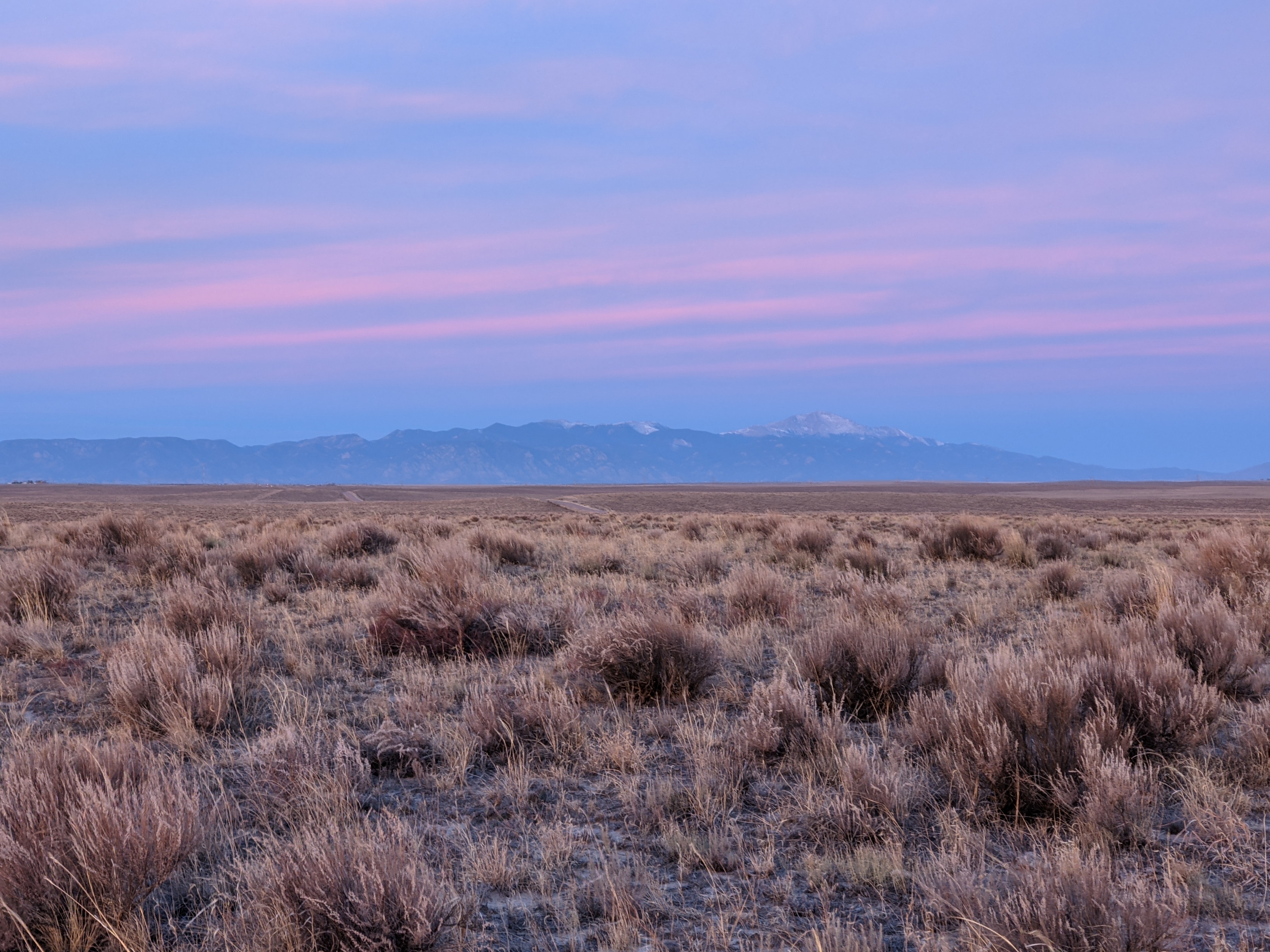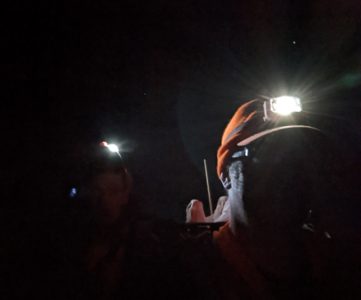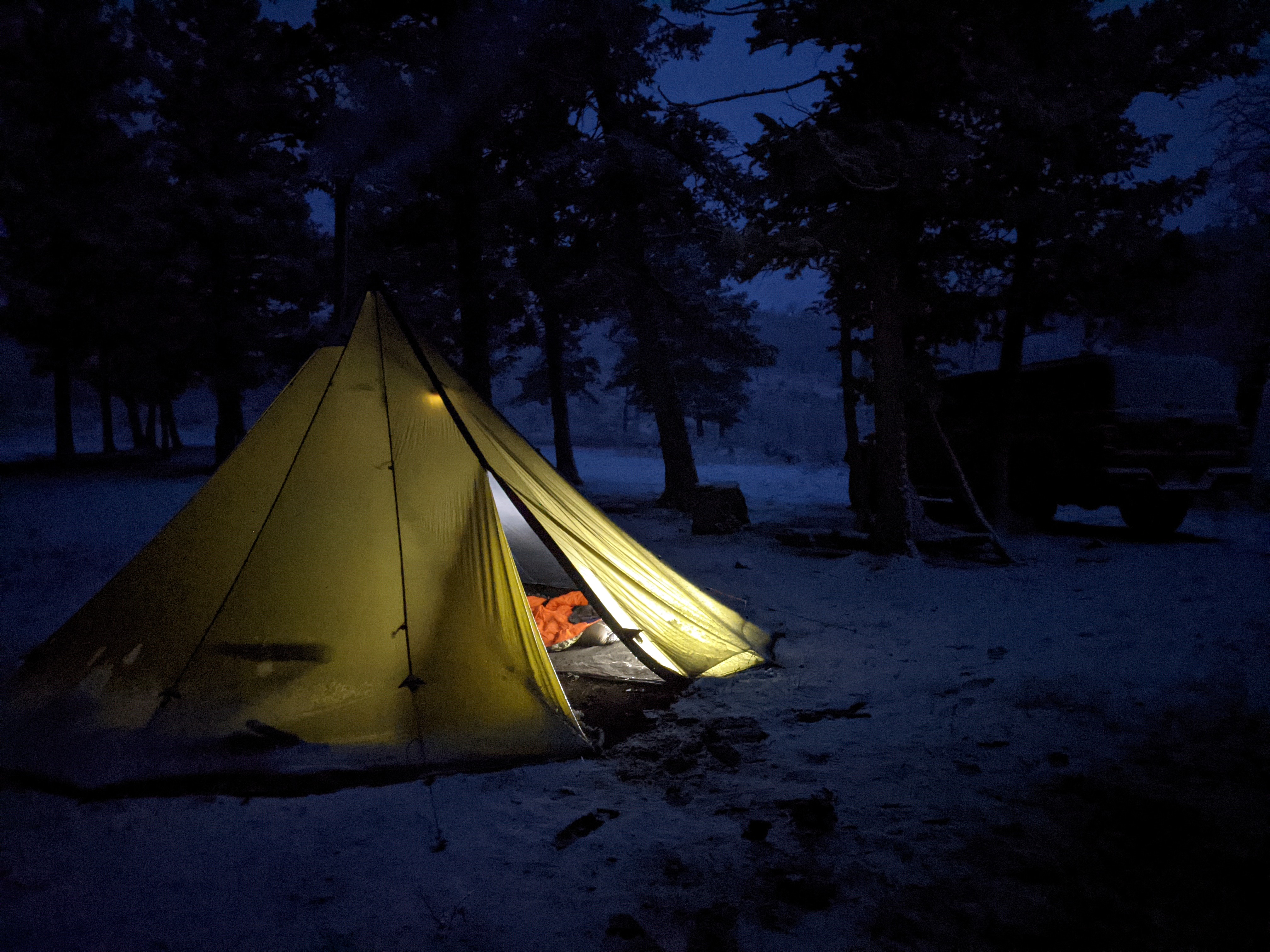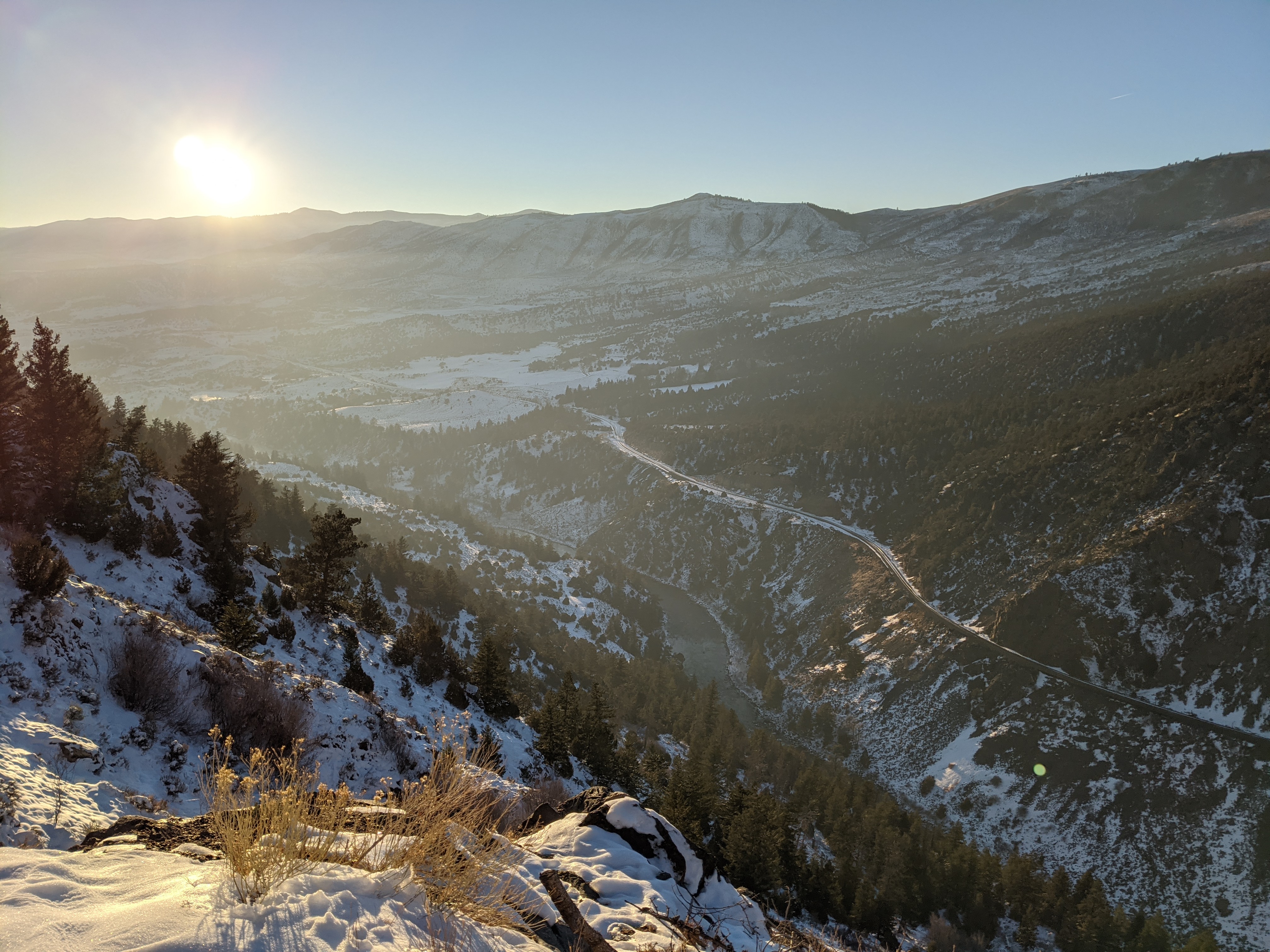Leftovers
The 2020 hunting season has been difficult to say the least. I’ve dealt with weather, fires, a split season for big game, cancelled out of state trips. The list goes on. However, this year I purchased a leftover late season pronghorn tag. I figured since the pandemic meant I got a lot of time to hunt turkey this year, a month long pronghorn tag might actually get filled. The problem with many of those longer season tags, and those tags that are in abundance is that there’s a reason for that. Season length and tag abundance are two of the knobs that wildlife managers can turn when they need to hunt a population that is over objective. That is to say that there’s more critters on the landscape than wildlife managers want.
Increased opportunity for hunters can address the higher than normal, or higher than desired herd size. But these dials may also be turned if the prevailing conditions limit success otherwise. In winter pronghorn herd up into much larger groups than you would otherwise see loitering about. More eyes together means it’s more difficult to sneak up onto them. They’ll often bust you from very far out. In rifle season you’re still required to wear blaze orange against the prairie, you’ll stand out.
Eastern Colorado is full of private land, and as you get closer to Nebraska and Kansas walk in opportunities are abundant using the state’s Walk In Area program for big game. However, in the Yoder DAU outside of Colorado Springs and Pueblo those opportunities don’t exist. You’re limited to very little public land, and knocking on doors. After getting skunked with one State Wildlife Areas (no centerfire rifle allowed) and seeing nothing on another SWA I went back to the maps.
An Embarassment of Riches… of Data
Researching the Game Management Units in question this time around brought up something pretty interesting. There was a study conducted in exactly the same area that I drew tags for, complete with management objectives and GMUs hashed out. CPW had it right there on their website for anyone to check out. However, it was a pretty lengthy read at 70 pages.

Taking the time to read the plan for the Yoder unit amazed me. The Appendix included all of the survey results and the free form text responses from other hunters. While both hunters and anglers are prone to exaggeration I now had a glimpse into some responses that were likely written to a trusted party. Now, the hunters likely agreed for these responses to be shared in some EULA or Affidavit. But we all know that was likely clicked through as part of a wall of text. Now we, the savvy researchers, get to reap the reward.
One comment specifically called out a piece of property I was not aware was even huntable. Doing some further research indicated that a non-profit group owned several chunks of land in each state as part of conservation easements and would sometimes let folks hunt on them if it met with their objectives for the property.
Permission Slips
I reached out both to CPW and the property owner of the private land owned by a foundation to see what the current status was. In the meantime since my son had been sick, I’d been barred from coming into work under COVID protocol. So since I couldn’t come in to work, my son was fine and in daycare, I decided I’d go hunting. I spent a second day walking the rolls and folds of the Turkey Track Ranch State Trust Lands that were open to hunters until February 1st. It was nice to see the sunrise under the shadow of Pikes Peak.
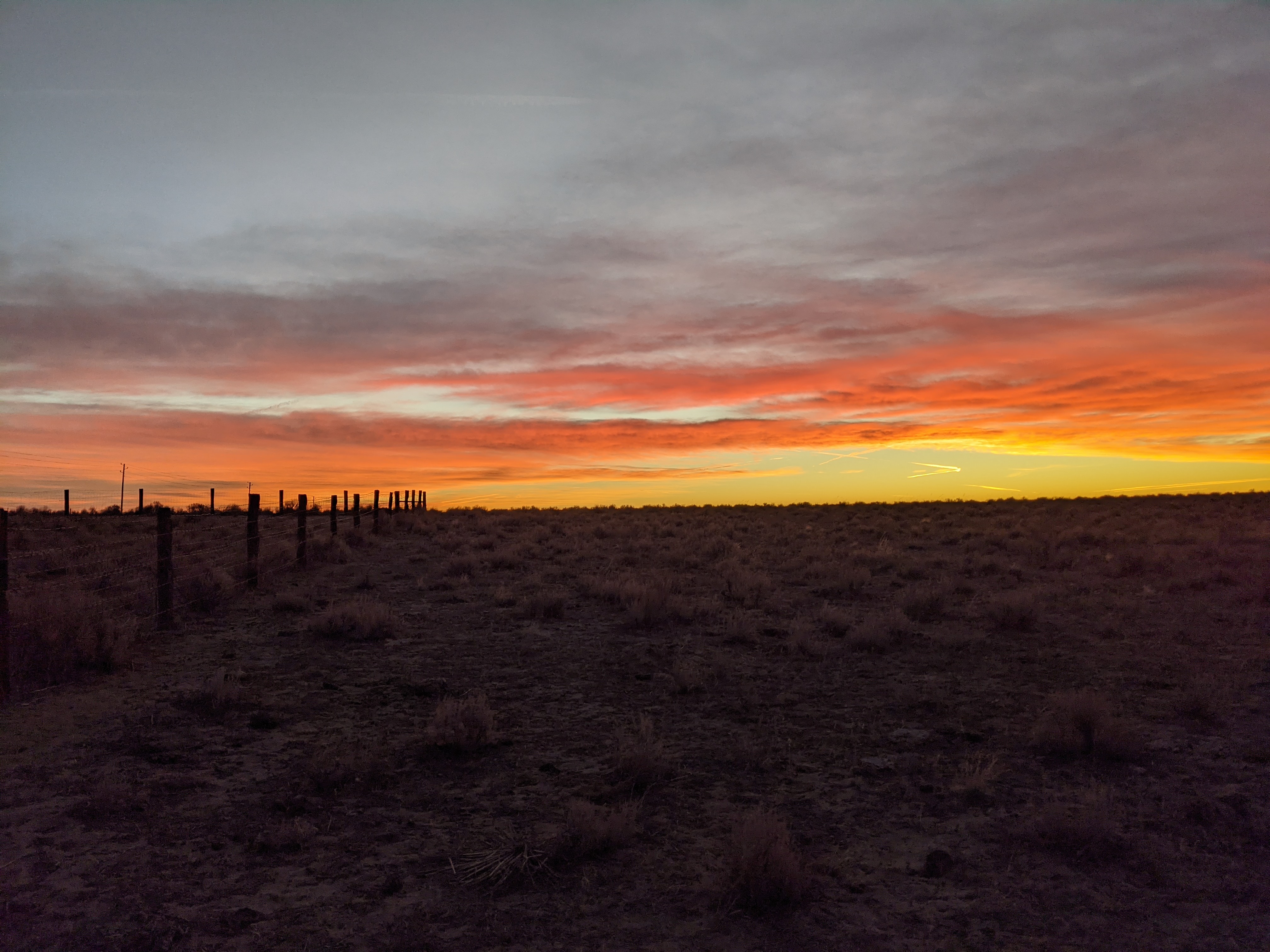
Late season pronghorn was proving to be trickier than I’d thought it would be. Sure, I found some land to hunt inside of 6 GMUs but were there any pronghorn actually here? There was definitely sign around. That second day though, winds were whipping around in all directions, and I checked every hummock on that ranch and found nothing but cows.
Permission Granted
Then an email came in from Colorado Parks and Wildlife! Buzz buzz. My phone lit up, one benefit of being on the prairie is that cell reception is actually pretty good. Glassing a 360 around me I saw no pronghorn were going to sneak up on me, so I reviewed the rather lengthy email from one of CPWs Communications folks. It turns out one of the properties I’d asked about had in fact been opened for small and big game this year through their Public Access Program.
However, the change didn’t make it into the Big Game Regulations book for 2020, but did make it into the 2020 Colorado State Recreation Lands book. I work in tech, so when the Comms guy told me exactly what page to check and quoted it, all I heard was RTFM. Embarrassed, and excited I now had an additional 50,000 acres to check out. Late season pronghorn might not be a wash after all.
Ground Truth
It’s hard to say whether a property will be productive until you’ve actually been there in person. This area I’d been interested in was big, held water in multiple reservoirs, and had areas well away from any roads. I’d heard the first step to success during late season pronghorn was to get away from all the road hunters. This property seemed to be the way to do it. All of the documented parking areas were on exterior roads and the property was incredibly sprawling.
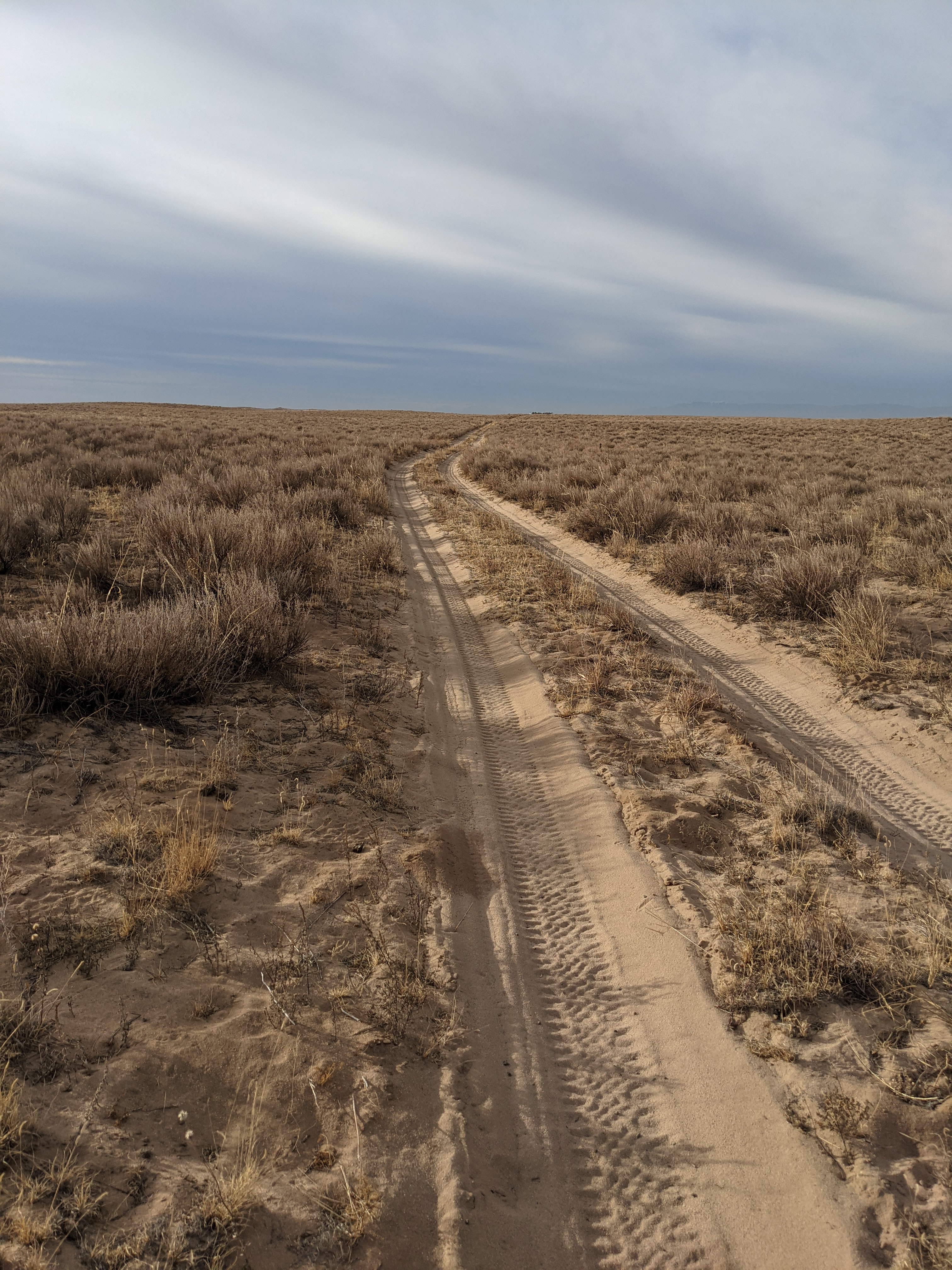
Excited that I got the email I walked the sandy soil back to my truck, three-ish miles and set off. The property wasn’t that far off, just in the next GMU over. Unfortunately that’s where things started to fall apart. Cell service went to nil. I didn’t have the PDF map of the place. There was supposedly between 4 and 7 parking areas around the property, and OnX showed exactly zero of them. The property access was so new I couldn’t find it on my detailed offline map I’d stored on OnX. Fifty thousand acres was a lot of territory to put 4 parking lots. I just didn’t have time to drive all the exterior roads. Damn. I drove home, happy with the knowledge that there was a new property, but I’d have to figure out how to access it.
Second Chance
I made a plan to go back to the ranch but pesky work and Coronavirus got in the way. My son’s daycare closed. Because of infections in his classroom it meant that for the next three weeks we were in daycare mode. But, that too would pass.
On the 28th I had a chance to get out to the newest property in the Colorado Parks and Wildlife Public Access Program, the Brett Grey Ranch. There’s 4 parking spots along the perimeter of the ranch, 50,000 acres, and 2 reservoirs. It’s foot travel only and fenced into segments with electric fencing in some areas. I managed to get out and walk a 15 mile loop of mostly shortgrass prairie with — let’s call it sparse cover. Unfortunately there was a cold front rolling in, and winds were whipping up pretty good. There was plenty of sign around, it just seemed like that day the pronghorn were elsewhere.
A Word of Caution
A word of caution for you folks from points elsewhere. During my last hunt of the season the snow kicked up pretty good, and my compass on my phone became disoriented. I struggled for a bit, the sun was hidden and the terrain was featureless. Cows served as my only landmark for a while of walking — until it started snowing in earnest and they moved. Perhaps I should have followed the cows, but with tired legs and dwindling daylight I didn’t want to walk further than I had to. Luckily I had a compass on me in my pack. I used it to verify that my phone compass needed recalibrated after digging it out. With a little bit of zigging and zagging I was able to make it back to the truck. Dodging cow patties made for a bit of a circuitous path back.

An End to the Season
Ultimately I walked 28 miles across three days on two parcels of property totaling nearly 60,000 acres. While I didn’t get what I was after, I hunted in the shadow of Pike’s Peak and found a fairly large shed antler. I also met some folks who, like me, jumped at the opportunity to hunt pronghorn. Two gentlemen and a young boy drove all the way in from Montrose, while one other fellow southpaw and ardent hunter drove in from Buena Vista — both quite a ways away.
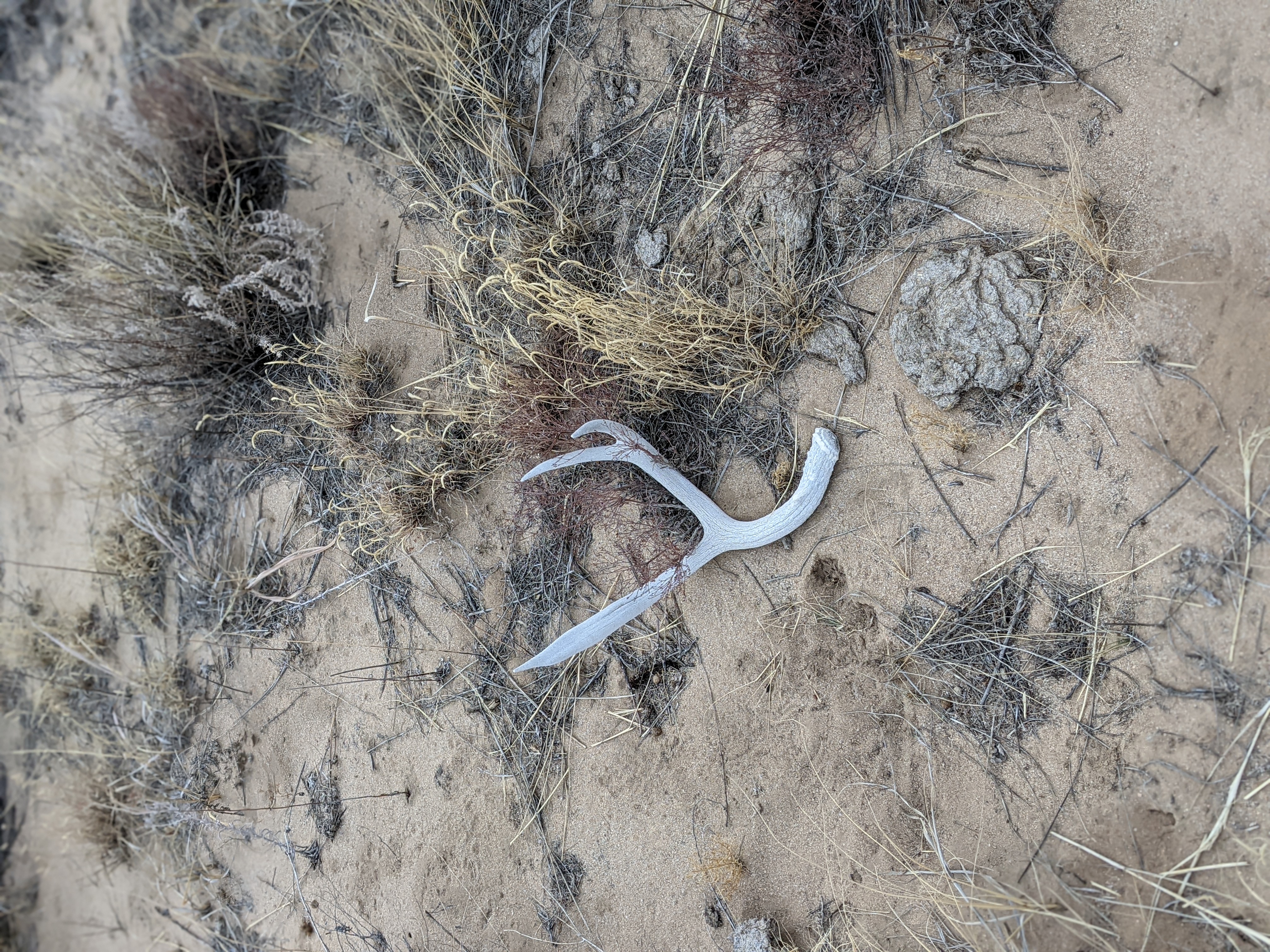
For $40 I always knew it was just a chance. But after the last few seasons of not getting to hunt pronghorn for various reasons, it was a chance I wanted to act on. If nothing else it put my mind at ease during this crazy year that while I couldn’t be with my dad in Pennsylvania I could still get out and chase something, somewhere.
| Want to try this hunt? |
|---|
| The late pronghorn doe tag runs in the Yoder DAU from 1 – 31 December, the tag is listed as AF110L1R and is often on the leftover list. The Yoder DAU covers 6 GMUs from Colorado Springs to Pueblo: 110, 111, 118, 119, 123, and 124. The season is long, access is sparse, but there’s a chance if you can put in the time for some delicious meat. |

